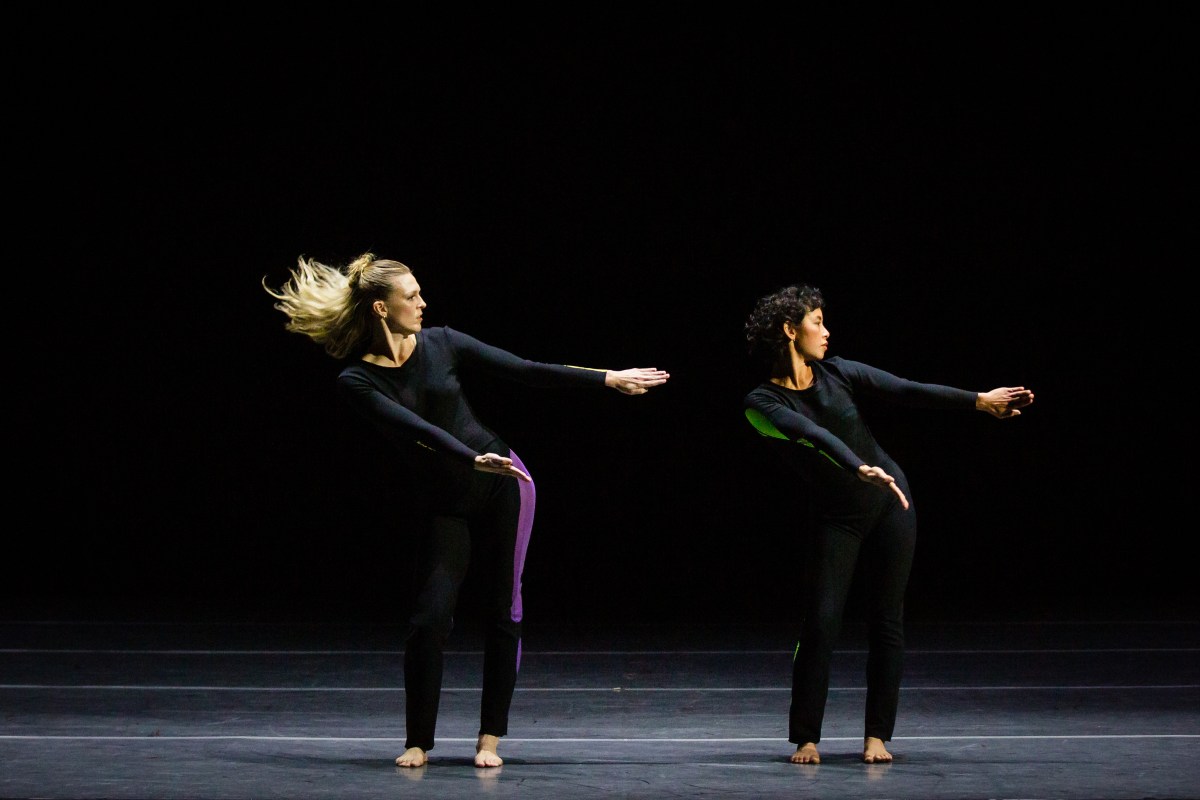Dance X is a three-part festival curated by The Australian Ballet’s Artistic Director David Hallberg, with a totality of nine companies involved over the duration of October. The first iteration has just been performed.
The night began with Uncle Bill Nicholson welcoming the audience to Country and speaking of her crying out for her needs to be heard. He also spoke of unity in community, which Hallberg heralded as an apt theme for Dance X, I New Then, The Australian Ballet’s joyous dance theatre piece by Johan Inger, to the soundtrack of Van Morrison songs. It opened with a duet between two male dancers who stood centre stage facing the audience, close together, torsos back to front. Receptive to the audience’s gaze, and to each other’s, the dancers’ movements were assured yet careful, accentuating the music’s emotion. I New Then is billed as romance, and the intimacy of this initial duet sets the audience up to view it as a queered one.
However, traditional gendered roles of ballet were also honoured. All the women, bar one, wore knee length, dowdy skirts, and the men pants. The men lifted the women, whose ascensions appeared effortless. A male and female dancer sweetly offered themselves to one another amid the privacy of labyrinthine vertical poles, removing their clothing piece by piece. But when another male dancer came across them, I assumed his sights were set on the man.
Grappling with his discomfort and attraction, he repeatedly exclaimed and proceeded to act out a male and a female during courtship – equally intriguing and obscene. His portrayal of a woman was particularly unflattering – fanning her face, hopping from foot to foot – and felt critical, as if fuelled by jealousy. When he mimed the thrusting of intercourse, it was unclear to me with whom he was hoping to perform this.
The final scene rounded the piece out satisfyingly. The dancers’ bold entrances, running and power walking on, both cleared the stage of all that had occurred and paid homage to it, as they moved with declarative, delicate and assured qualities. Upon each new appearance, an additional item of clothing had been removed. For a moment, I felt cast as the onlooker from the prior ‘love triangle’. However, there was no stumbling upon something private; these dancers revealed and asserted themselves before our gaze.
A white light poured through darkness and smoke. Sydney Dance Company opened ab [intra] with a sustained, strong duet. Every lift propelled the unified pair through space. Controlled fall outs, levers and shifts in physical connections determined their course. One body, reaching and morphing. And despite the cool-toned lighting state, the knowledge the dancers evidently possessed of one another meant the duet felt warm. Drops of sweat fell like the beginnings of summer rain.
ab [intra] charts a journey from ‘tenderness to turmoil’. When a beam of light travelled back, expanding the stage, and a hoard of dancers in black pants, with bare chests or tan crop tops, lined up across the back, everything turned damp and sinister. The dancers’ toned abdomens and shoulders were lit, but their faces were in darkness. Before them, one dancer moved as if wrestling with himself and within the borders created by the faceless dancers.
The whole ensemble spread out across the stage, and their repertoire shifted between hard lines and angles, and curves. A drumming beat came in, and everything escalated. Every sound and motion was paired. Nothing was left unresolved until we got to the closing solo performed by the same dancer as before. His looping remained relentless, and he looked subtly crazed, but this time, with the lighting state lifted and his outfit flipped (now a shirt and underwear only), he seemed to be testing something.
He moved as if he had psychically retreated from his environment, possessed only a close-range view, and inhabited an orb, spinning as though he was testing its limits. A repeated piano note got faster, and then quieter until I was able to hear his scuffs, falls, breath.
In Lucy Guerin Inc’s How To Be Us, Samantha Hines and Lilian Steiner entered from opposite corners, lunging and performing synchronised, crisp gestures – commanding the audience’s attention. The physical vocabulary and sound built into a crescendo, accompanied by overhead light panels stamping on, before a green faded in. The whole thing was a pleasure on the senses, and had a club vibe, in part due to how close I felt to the action. Like ASMR (autonomous sensory meridian response), magnified. At times, the dancers held pauses, allowing everything to be, and beat on, without them.
The turning point in this hero’s journey, saw the dancers accept their mission by joining hands. They continued moving as a mirrored pair, taking it on together: two fierce women kicking, flicking and stepping with petite allegro-esque flair. Their black tights and long sleeve tops by costume designer Geoffrey Watson, with fluoro-coloured panelling on the back, read as futuristic, camp, adventure-wear.
When physically apart and out of sync, they remained connected. Hines, on the floor, copied Steiner’s arm movements. Steiner turned her costume’s panelling to the audience and, standing over Hines, appeared as a skeleton hovering over a body. The two came together once more to hold hands. As the lights went down, I imagined the next chapter of their mission beginning.
Bangarra Dance Theatre’s Terrain, choreographed by Francis Rings, was truly transporting. Smoke clouds filled the air, and the ochre-coloured backdrop, ridged with curves, reminded me of water lines on a lake – ‘our largest salt lake’, Kati Thanda-Lake Eyre.
Eight male dancers in torso-covering, textured white costumes entered, wielding shields. These rippled, circled and vibrated through the air, and at one point were brought together to form one large shield. Salt fell from their bodies to cover the ground, and lines and scruffs were left in their wakes. My eye was drawn to these shields and next to the dancers wielding them. There was a tremendous power and humility in the way the shields were being given primacy.
When the female dancers entered, new movement vocabularies were introduced, ones that accommodated and drew focus to the dancers’ costumes: branching, tree-inspired headpieces and trailing spinifex skirts. Seemingly opposite qualities were overlaid to convey depth – twitching, articulating and undulating spines. Sharp piques and circling hips.
Watching the dancers, I felt caught up in the scene’s expanse, as though this great salt lake continued over the backdrop into the distance. Lights rose like water, and filled in the lines upon the backdrop, as dancers pushed out of the floor, costumed in unitards with soft splashes of pink, or in crystalline collars and pedal pushers that appeared flecked with salt. A pairing of duets, each between a man and a woman, was not sexual or romantic, but deeply intimate.
Read: Theatre review: The Demon
The beauty of the final solo, as with all the dancing in Terrain, caused further reflection on how dance is made more accessible and richer when techniques were elaborated on by a dancer’s skills and interests, and by the feeling they brought to their dancing.
All in all, Dance X (Part 1), was an energising night and a celebration of the art form. What was surprising was how these works, when presented together, resonated as more beautifully alike than different.
Dance X (part one)
Arts Centre, Melbourne
The Australian Ballet I New Then
Sydney Dance Company ab[intra]
Lucy Guerin Inc How To Be Us*
Bangarra Dance Theatre Terrain
Dance X (part one) was performed from 20-22 October, part two will be performed on 25-28 October and part three on 29 October-1 November.





